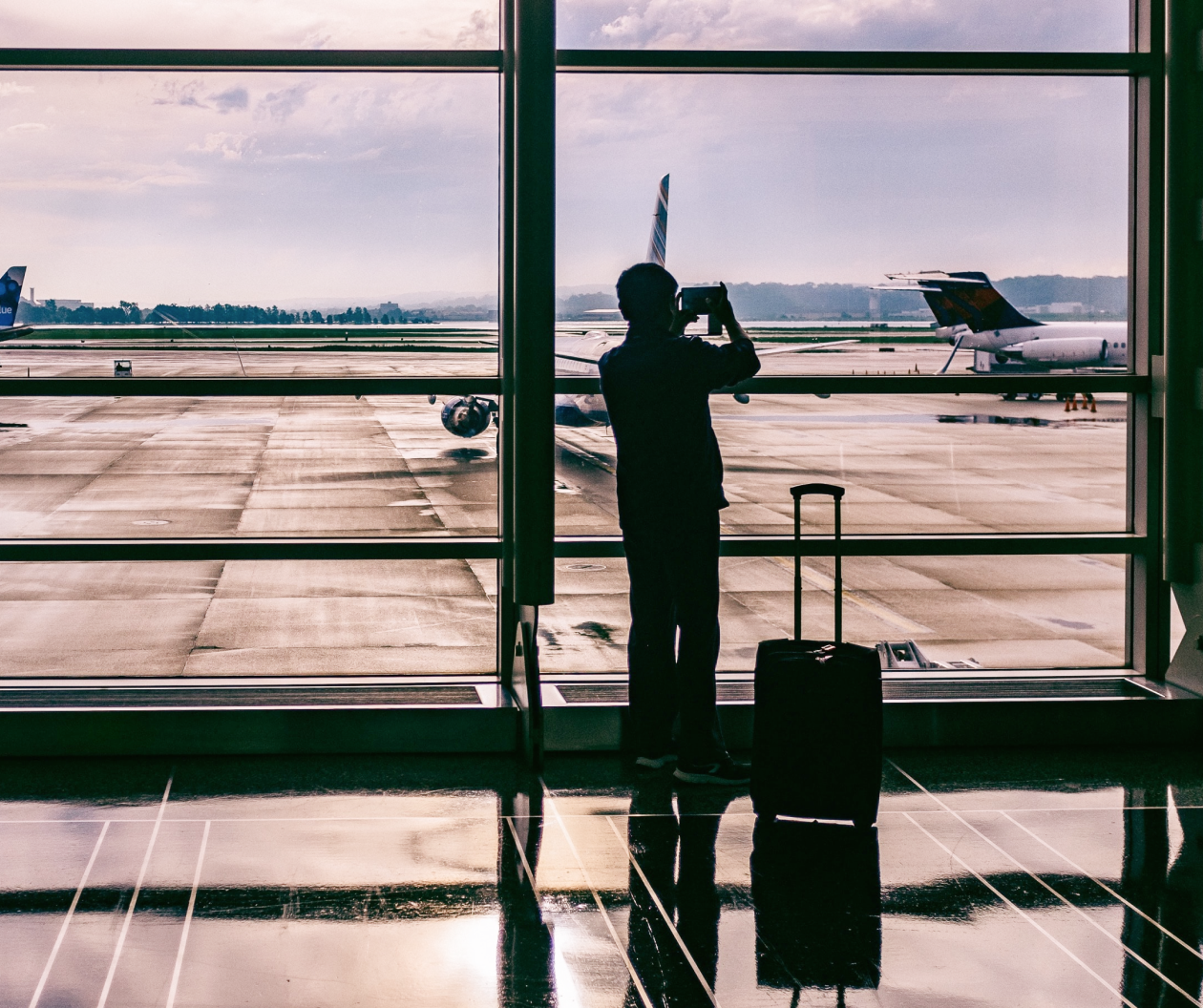The aviation industry is facing an unprecedented crisis. In April 2020, international passenger capacity dropped by 91% as a result of the COVID-19 global pandemic and the quarantines, lockdowns and border closures governments instituted to slow the virus’ spread. As a result, the aviation industry expects a USD 300-billion-drop in airline passenger revenue in 2020.
This downward trend will have a knock-on effect on global airport revenue as well, which is expected to lose approximately USD 100 billion during 2020, with Europe and APAC accounting for two-thirds of the total loss. And since global passenger traffic is not expected to return to pre-COVID-19 levels until 2024, the aviation industry can’t afford to wait for things to return to normal.
To remain relevant, the aviation industry ought to find a way to adapt to this new reality and to ease passenger concerns regarding the safety of flying during a global pandemic.
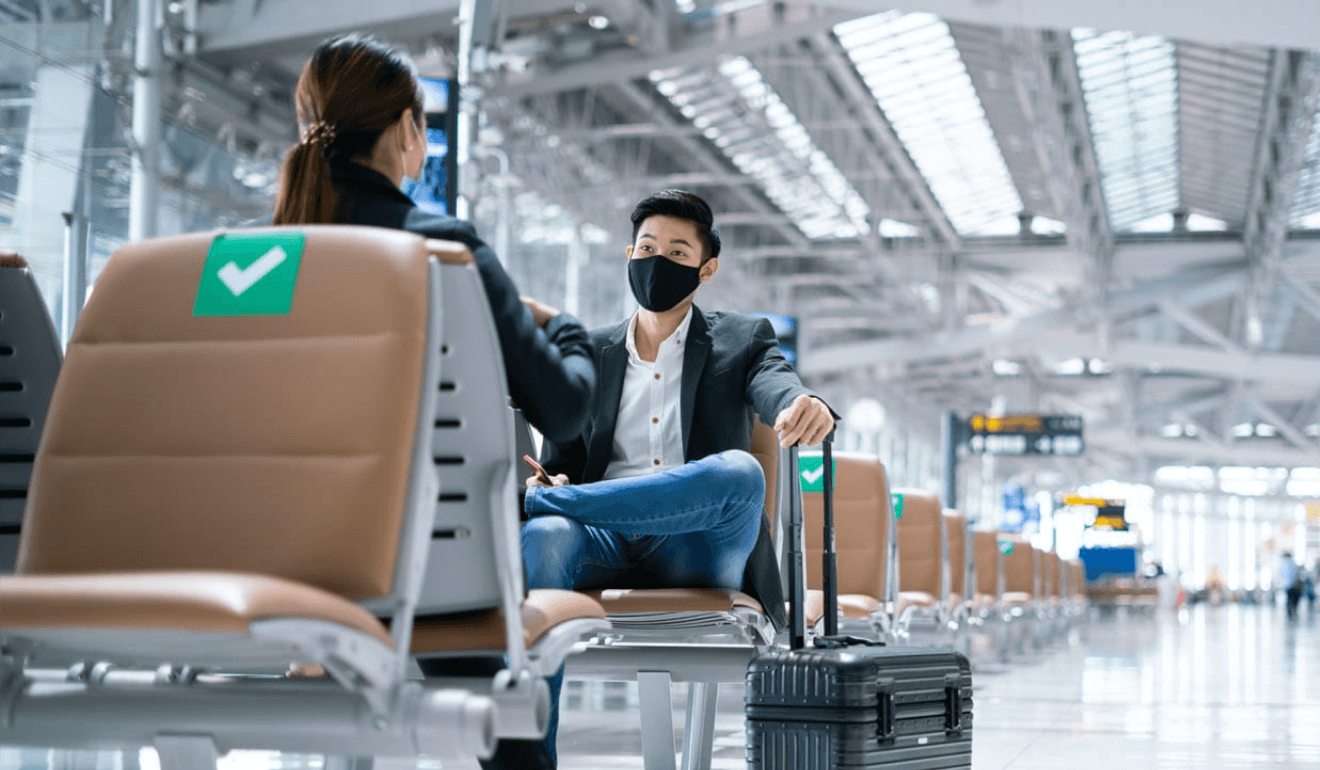
How to regain passenger trust
According to a recent IATA Passenger Insights Study, 84% of passengers are afraid to travel before the virus is fully contained. To rebuild confidence in air travel, the industry needs to understand this radical shift in people’s mindset. Once you understand customers’ fears and expectations, you can better see how to help them regain trust and confidence in air travel.
The path to rebuilding passenger confidence involves three key steps:
- Build empathy with customers to understand their fears and priorities.
- Create relevant, consistent solutions along the entire passenger journey.
- Develop “pandemic-proof” products and services that are both flexible and scalable.
Let’s take a look at these steps one at a time.
Step 1: Understand passenger needs and concerns
Traveling is more than just a departure and an arrival. It’s an experience that stretches over a longer period of time, involving several touch points.
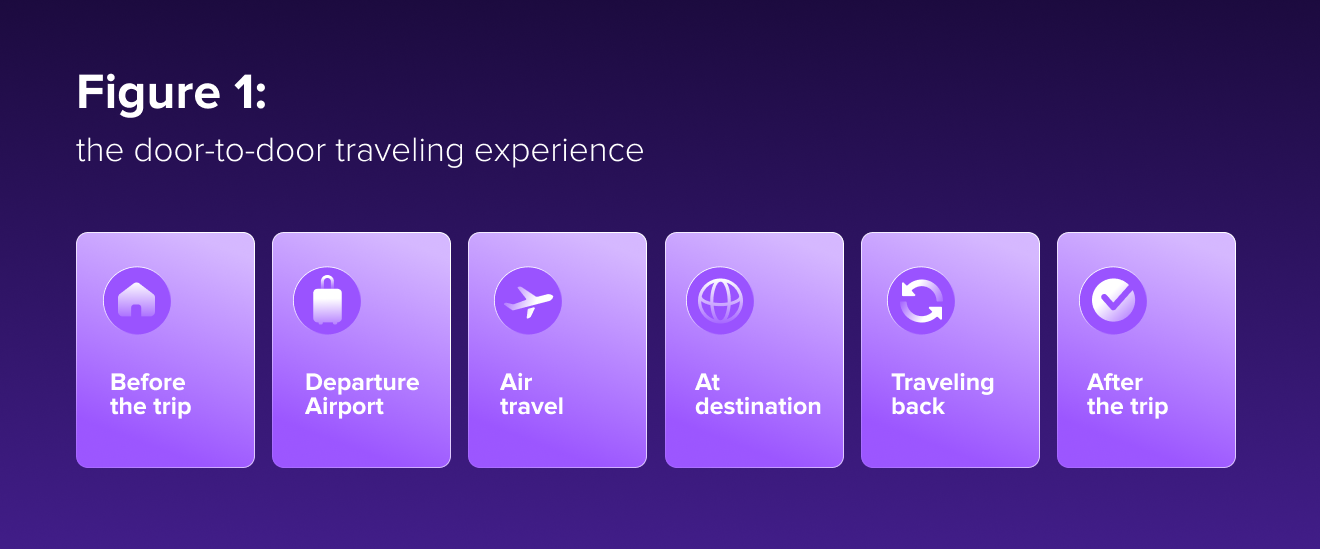
In order to instill trust, the door-to-door air travel experience must be consistent and predictable. To create and ensure this type of experience, we have to understand:
- What happens at each stage of the travel journey,
- What measures and regulations exist at each stage and
- What expectations customers have at each point in the journey.
A useful tool for developing this understanding is a journey map. Journey maps help companies capture insights and understand individual needs and pain points across all touchpoints in the customer experience. Each journey map is built around a persona – a representative figure of a particular type of customer, i.e. a business traveler, that can help you to generate each unique customer journey. As you construct the journey maps for each persona, pay particular attention to the pain points that might arise during each phase, as these can be a helpful starting point for creating relevant solutions.
Let’s take a look at Figure 2 with sample pain points added to each phase of the travel experience:
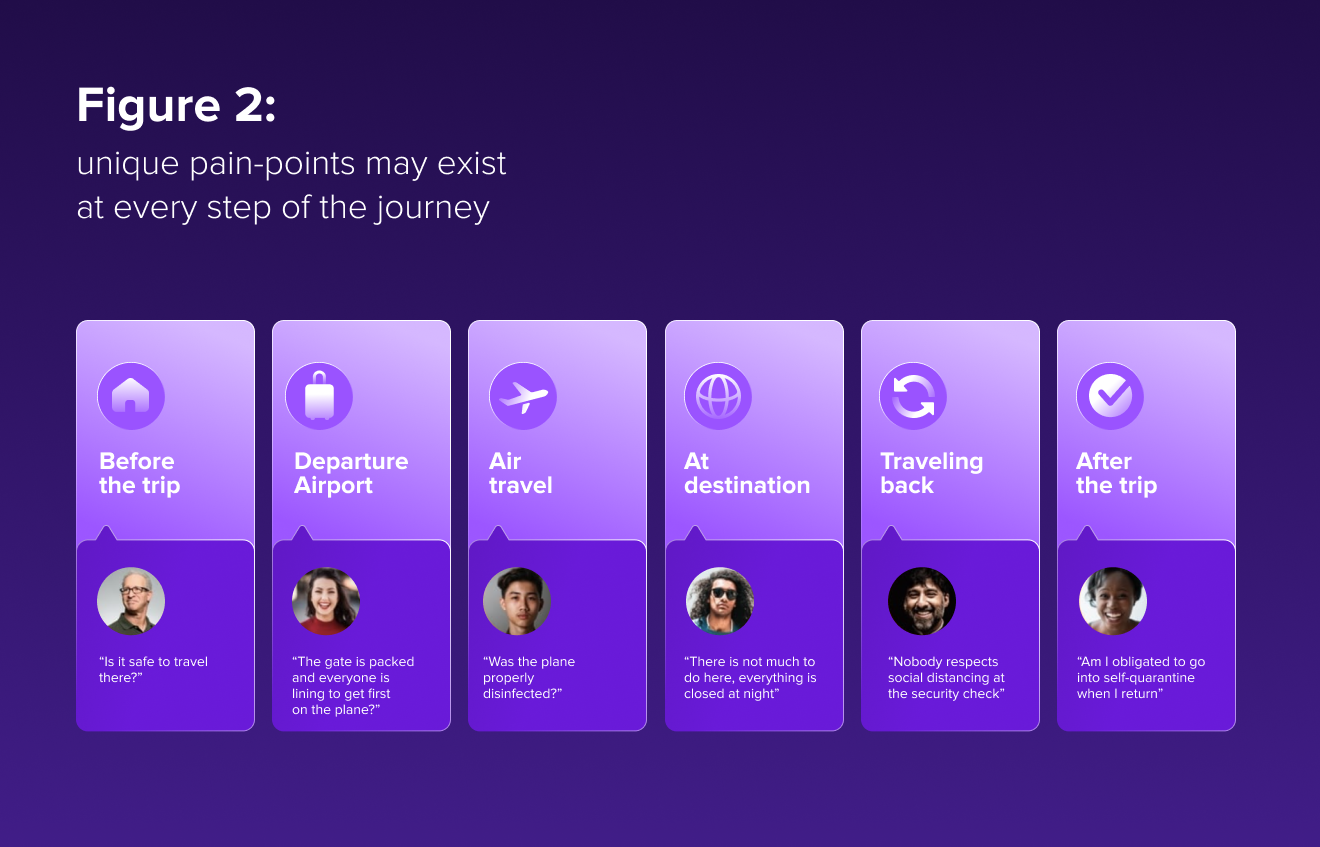
We can translate these pain points into four main customer expectations for travel in the aftermath of the COVID-19 pandemic:
- Customers expect the highest hygiene standards upheld by authorities, operators and other passengers.
- Customers expect flexibility when it comes to rebooking their tickets for a different date or location, or getting a timely refund.
- Customers expect logical, easy-to-access and consistent information on-board and on-the-ground.
- Customers want predictable and trustworthy experiences regarding their upcoming trip.
Now that we’ve mapped the pain points, we can move on to Step 2.
Step 2: Create relevant, consistent solutions along the entire journey
Today’s COVID-19 measures are often scattered across a number of players in the aviation industry, e.g. airports, aircraft manufacturers, airlines and governmental agencies. To satisfy customer expectations, and allay their fears and concerns, aviation industry players will need to work together along the value chain to develop a holistic, post-COVID-19 travel solution.
To illustrate this point, we’ll take a look at some of the pain points customers have during phase one: Before the trip. Customers might wonder:
- Is it safe to travel to my intended destination?
- What if my destination is designated a red zone before I arrive?
- What will happen if my flight is cancelled? Will I get a refund?
To address these uncertainties, it’s important to provide travelers with all the necessary information during the booking process, and ensure flexibility so potential travelers can prepare for all eventualities. How can this be done?
Figure 3 shows a quick mock-up of how a smartphone travel app could take these factors into consideration, address the pain points a customer has at this point in the journey and provide valuable information to help ease concerns.
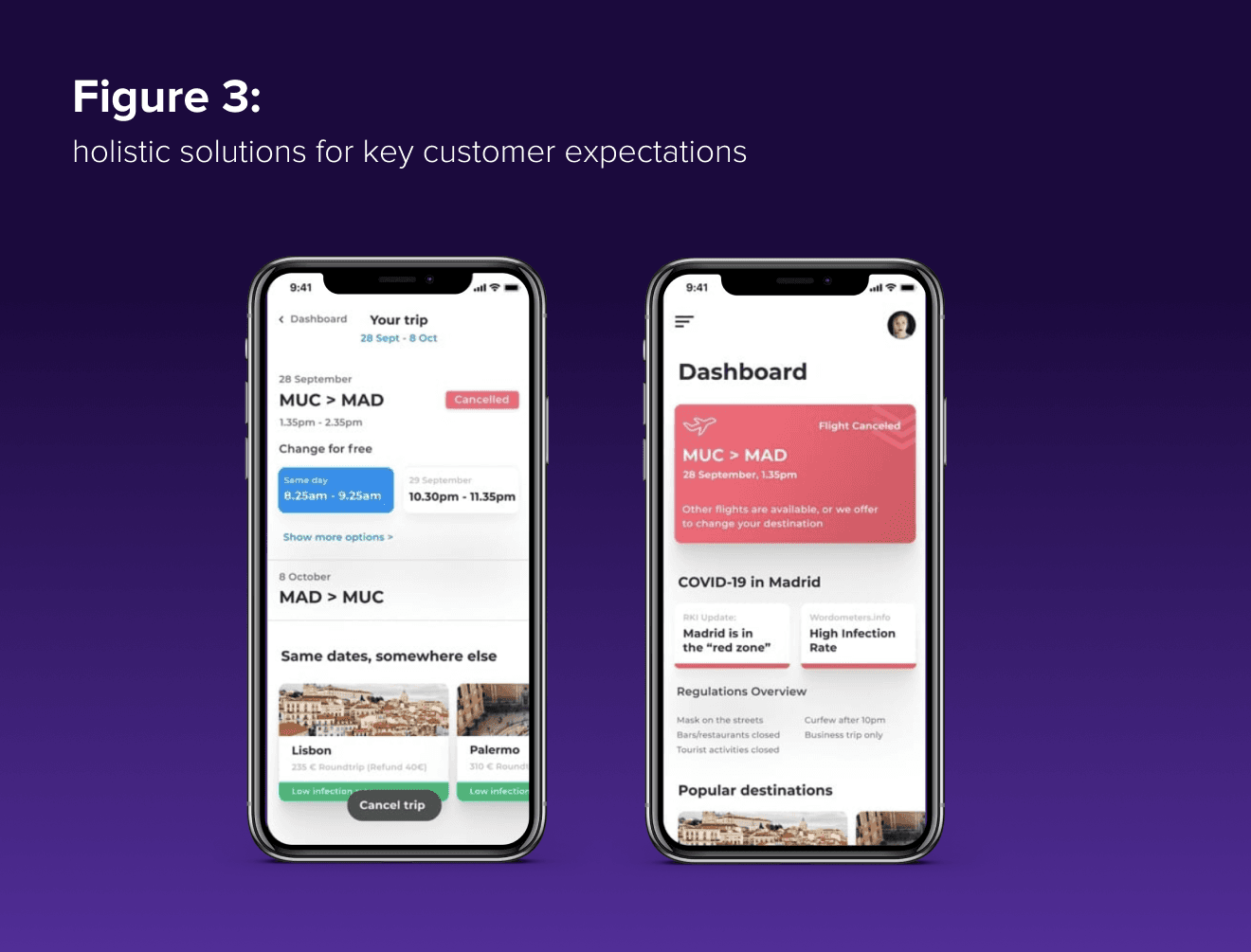
This mock-up shows a travel app that addresses the four key customer expectations:
- Flexible – Customers can easily change cancelled flights, or apply for a refund.
- Consistent – Getting a refund or changing a flight is simple and can be done directly from the application.
- Predictable – Customers can clearly see what they can expect regarding the destination’s pandemic status.
- Hygiene – Customers can see the infection rate at their destination.
Once we’ve created our solution, the final step is making sure it’s pandemic-proof.
Step 3: Develop “pandemic-proof” products and services that are flexible and scalable
This final step relates to how you work and develop solutions. At Star, our experience has taught us the value of an iterative development process. We start with idea generation and validate each idea in weeks, not months. We do this by identifying and prioritising relevant solutions that matter to people. The viable ideas are prototyped and user tested, and the results are fed back into the ideation process. This constant cycle of ideating, testing, user research and product development helps us to launch products faster and keep them relevant to the target audience.
Learn more about how Star has used an iterative development process to help Lufthansa reinvent the passenger experience.
The future of the aviation industry
The current COVID-19 crisis has many industry experts wondering if aviation as we know it is dead. And while it’s true that these are challenging times, the aviation industry has faced other crises before, and successfully weathered the storm. The industry players that will define the future of aviation post-COVID will be the ones that:
- Rebuild trust by meeting customer expectations for hygiene, flexibility, consistency and predictability;
- Collaborate with other players to create a consistent travel experience;
- Include customers in the product development process and
- Use digital tools to react quickly to changing circumstances and provide customers with personalized interactions.


